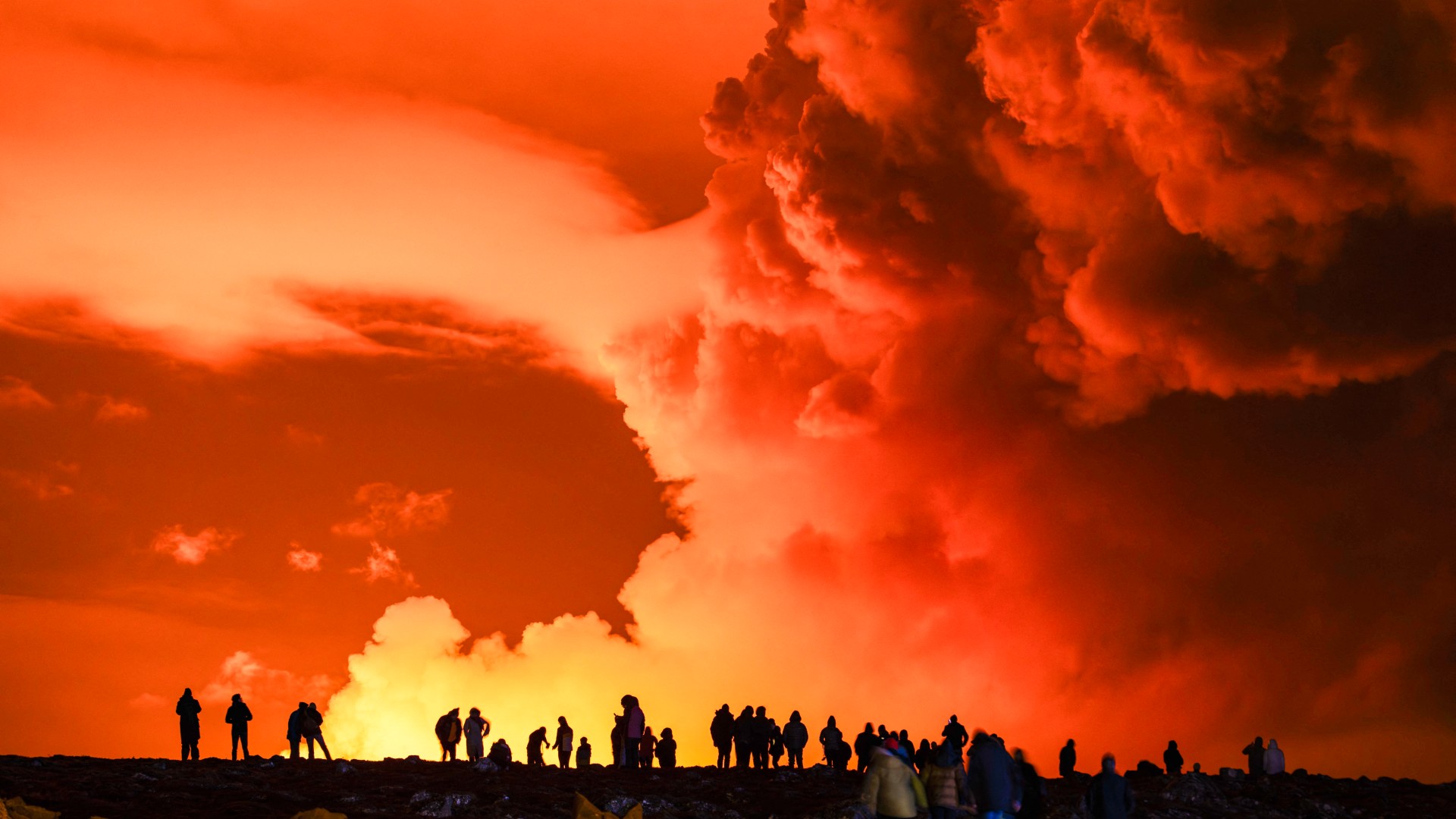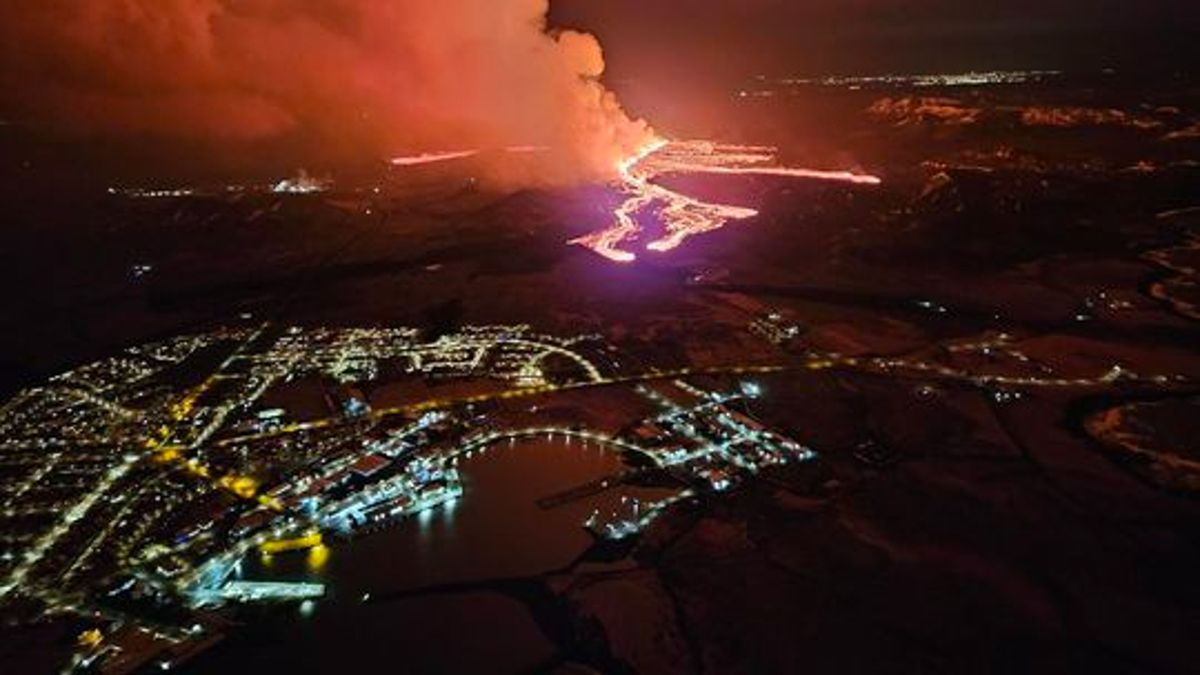Satellites watch Iceland volcano spew gigantic plume of toxic gas across Europe

Scientists are tracking a massive plume of toxic gas moving across northern Europe that was spat out by the ongoing volcanic eruption in Iceland. The gas cloud is unlikely to cause any serious health problems. However, it could impact the ozone hole above the Arctic, experts warn.
On March 16, an underground volcano in Icealnd's Reykjanes Peninsula blew its top for the fourth time in as many months, opening up the largest fissure of the current eruption cycle and unleashing a massive lava flow that narrowly missed the evacuated town of Grindavík. There were initially fears that the lava flow could reach the sea and unleash a plume of hydrochloric acid, which would have been "life-threatening" to anyone close to the coastline, Live Science previously reported. However, the lava never reached the shore.
But the eruption did release sulfur dioxide — a colorless, toxic gas that can be extremely dangerous in high concentrations.
Related: Satellites watch Iceland volcano spew lava towards fishing village (photo)
On March 17, the volcano was spitting out around 110 pounds (50 kilograms) of sulfur dioxide every second, according to a translated statement from the Icelandic Met Office. Workers at the nearby Svartsengi power plant were evacuated from the facility due to high levels of the gas, Icelandic news site RÚV reported, and locals were temporarily warned to stay inside, according to Iceland's Civil Protection.
Sulfur dioxide emissions have diminished significantly since March 18, but new data from the Copernicus Atmosphere Monitoring Service (CAMS) — part of the European Union's Copernicus program, which tracks weather and climate changes using satellite data — shows that the initial outpouring of gas formed a 3-mile-tall (5 kilometers) concentrated column that has since blown toward other countries in northern Europe.
The gas plume has already passed above the U.K. and is currently approaching Scandinavia, where it will begin to dissipate before entering Russia.
Breaking space news, the latest updates on rocket launches, skywatching events and more!
CAMS will continue to track the plume "although we don't expect there to be any impact on surface air quality or climate," senior CAMS scientist Mark Parrington said in a statement emailed to Live Science.
However, tracking sulfur dioxide emissions is still important because the gas can react with atmospheric ozone molecules, depleting the amount of this protective substance in the ozone layer, which shields Earth's surface from the sun's harmful ultraviolet rays.

In October 2023, scientists partially attributed the near-record-largest ozone hole above Antarctica to the 2022 eruption of an underwater volcano in Tonga, which released high levels of water vapor into the atmosphere that may have depleted ozone levels.
Experts predict that the recent eruptions in Iceland could be the beginning of a new centuries-long period of activity in the region. As a result, the amount of sulfur dioxide being pumped toward the Arctic could also rise over the next few years, which could lead to larger northern ozone holes in the future.
"The impacts of the volcanic eruptions in Iceland in the atmosphere have not yet been so severe, but it is relevant to keep monitoring the evolution of the situation," CAMS director Laurence Rouil said in the statement.

Harry is a U.K.-based staff writer at Live Science. He studied Marine Biology at the University of Exeter (Penryn campus) and after graduating started his own blog site "Marine Madness," which he continues to run with other ocean enthusiasts. He is also interested in evolution, climate change, robots, space exploration, environmental conservation and anything that's been fossilized. When not at work he can be found watching sci-fi films, playing old Pokemon games or running (probably slower than he'd like).


